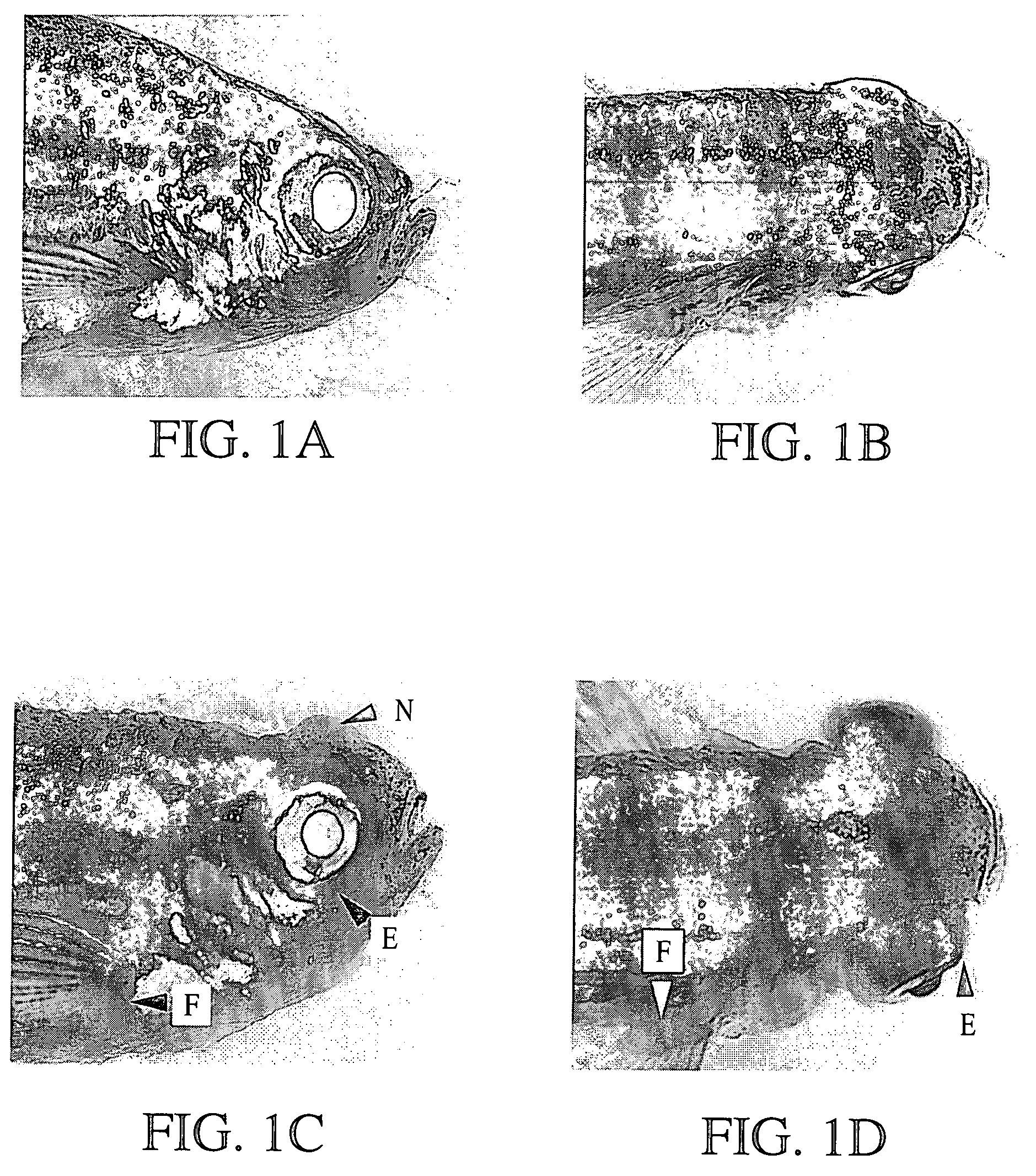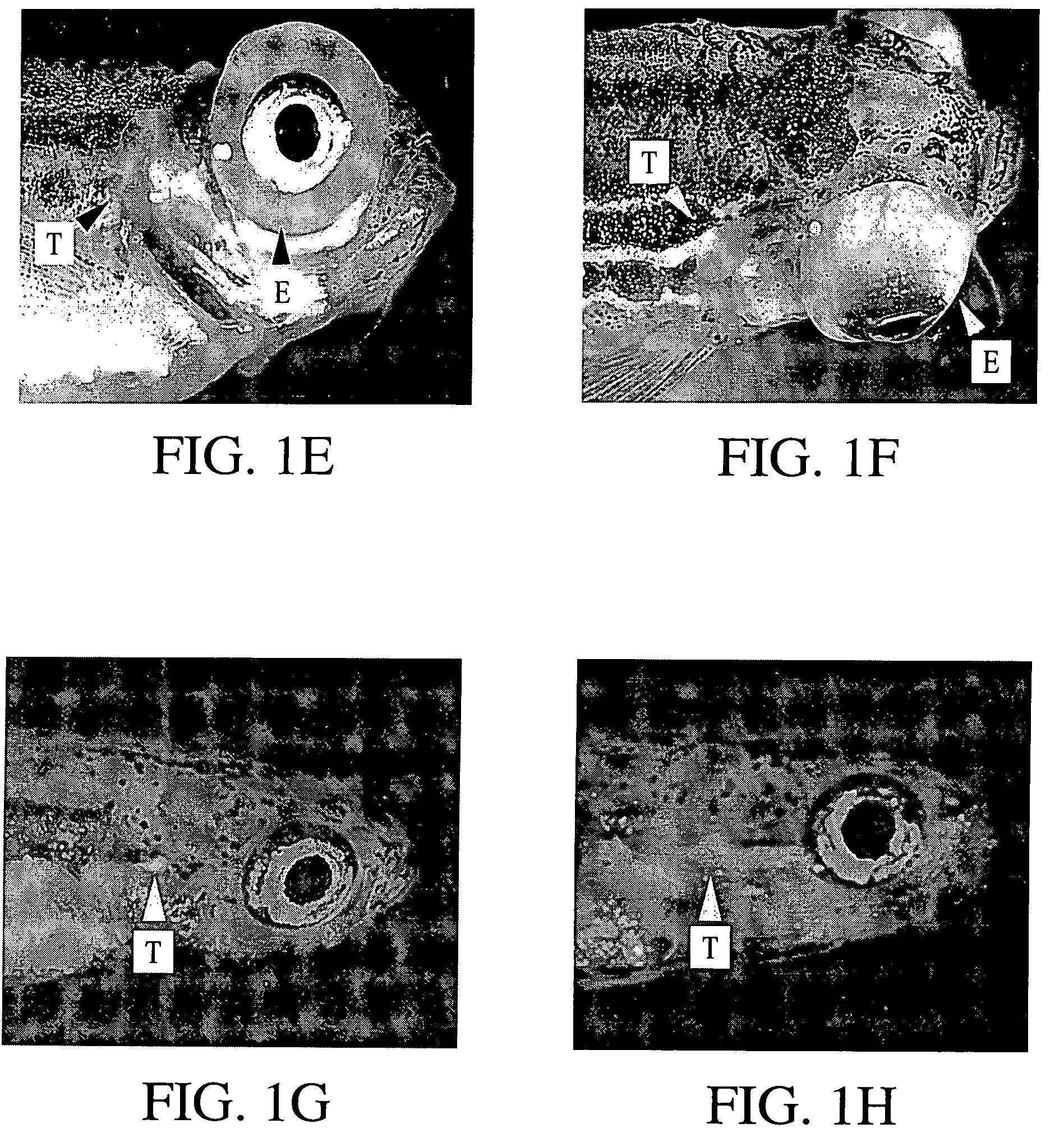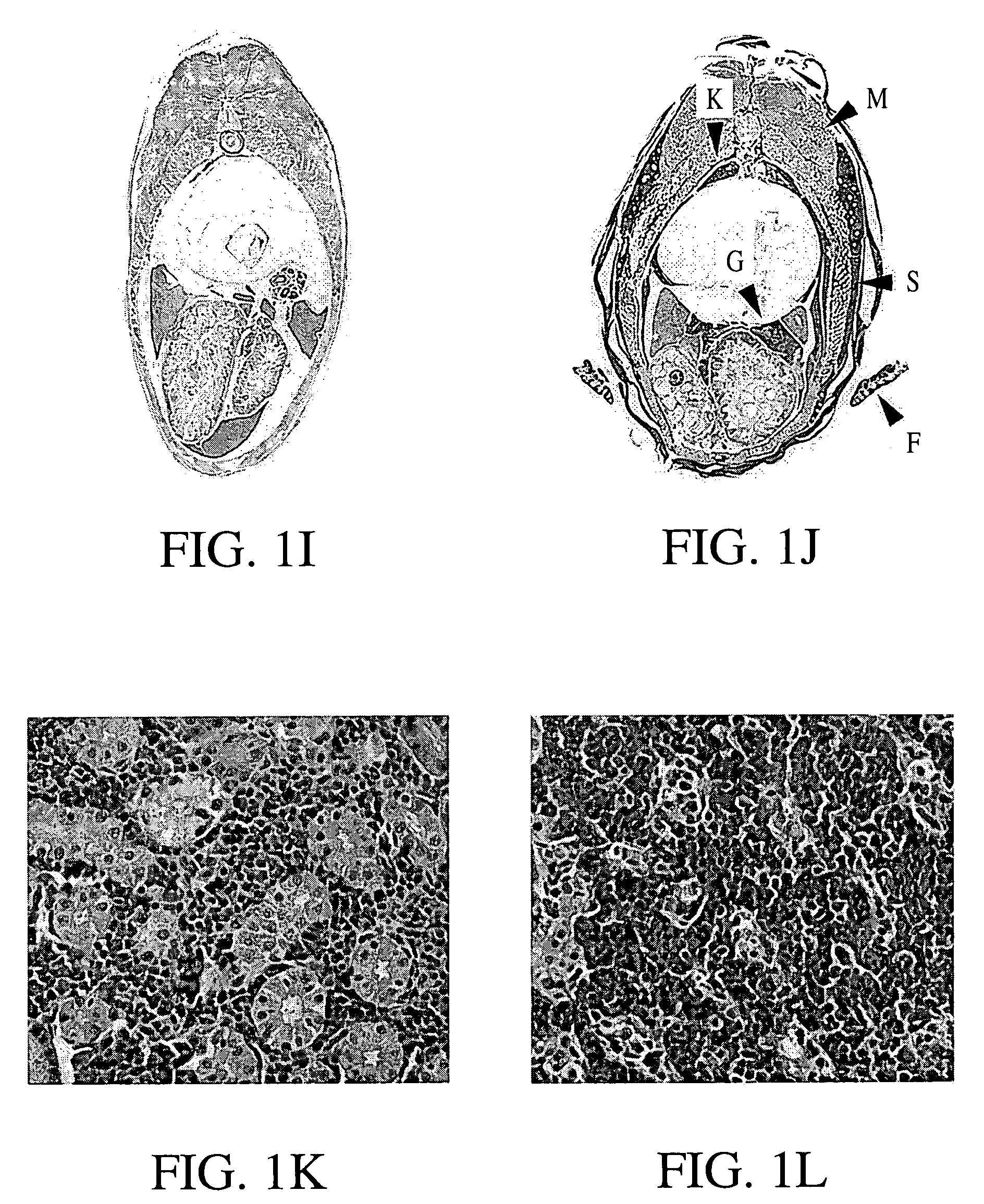Transgenic cancer models in fish
- Summary
- Abstract
- Description
- Claims
- Application Information
AI Technical Summary
Benefits of technology
Problems solved by technology
Method used
Image
Examples
example 1
RAG2-MYC Transgenic Models of T-c II Leukemia
[0104]Translocation of cMYC gene into the T-cell receptor locus or immunoglobulin enhancer region causes dysregulation of the cMYC gene and results in malignant transformation of T- and B- cells in T-cell acute lymphoblastic leukemia and B-cell non-Hodgkin's lymphoma. Given that zebrafish are amenable to genetic screens, develop rapidly ex-utero, are transparent for much of their life cycle, and produce large clutches of offspring each week, zebrafish serve as an ideal model to study conserved pathways that lead to MYC-induced cancer progression in vertebrates. This example describes production of a zebrafish model of T-cell acute lymphoblastic leukemia, wherein mouse-cMYC was targeted to the T-cell progenitors in mosaic (or chimeric) F0 fish, and in a stable line of zebrafish in which the progeny express and transmit to their offspring a EGFP-mMYC transgene.
[0105]Mouse cMYC and EGFP-mMYC fusion proteins were targeted to the T-cell progen...
example 2
Use of RAG2-EGFP-Zebrafish BCL2 Transgenic Models to Identify Chemical and Genetic Suppressors of BCL2 Function in T-Cells
A. Materials and Methods.
[0158]Diseases such as follicular B-cell lymphoma have activation of BCL2, an anti-apoptotic gene, which renders these tumors resistant to apoptosis and allows them to become less sensitive to chemotherapy and radiation therapy than B-cells transformed by other mechanisms. Additionally, a large proportion of tumors misexpress the MYC oncogene, a transformation event that necessarily requires inactivation of the apoptotic machinery. Creating drugs that inhibit BCL2 or MYC function in transformed cells would be advantageous for treating human tumors and may be used in combination with chemotherapy and radiation therapy to selectively kill cells that have overexpression of this oncogene. Similar experiments to those described herein for BCL2 may also be performed with, e.g., cMYC.
[0159]1. DNA Constructs.
[0160]Degenerate PCR was used to ampli...
example 3
Transgenic Models of High-Grade Astrocytoma
[0188]High-grade astrocytomas are the most common and devastating adult brain tumors, spreading so rapidly that patients seldom survive more than 9-12 months. Despite progress in surgical, radiation and chemotherapy technologies, there has been little improvement in the outcome of patients with astrocytoma over the last twenty years. Clearly, novel approaches are needed to better understand the biological basis of this disease before effective therapies can be developed.
[0189]The brain consists of two main types of cells, neurons and glia, which multiply and migrate in precise patterns during early development, resulting in the complex structures of the brain. As the brain develops in the embryo, the proliferation and migration of glia is controlled by the coordinated activity of many genes. While some genes are needed to begin normal glial cell proliferation and migration, others are necessary for appropriately stopping these processes. As...
PUM
| Property | Measurement | Unit |
|---|---|---|
| Size | aaaaa | aaaaa |
| Sensitivity | aaaaa | aaaaa |
| Fluorescence | aaaaa | aaaaa |
Abstract
Description
Claims
Application Information
 Login to view more
Login to view more - R&D Engineer
- R&D Manager
- IP Professional
- Industry Leading Data Capabilities
- Powerful AI technology
- Patent DNA Extraction
Browse by: Latest US Patents, China's latest patents, Technical Efficacy Thesaurus, Application Domain, Technology Topic.
© 2024 PatSnap. All rights reserved.Legal|Privacy policy|Modern Slavery Act Transparency Statement|Sitemap



